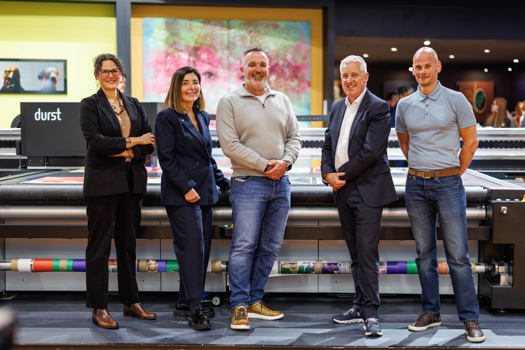And those feelings are justified, perhaps, as separate figures from the National Readership Survey (NRS), released last week, show that 83% of Brits aged 15 or over, or 42.8 million people, read a print newspaper or magazine every month while 72% consume newspaper or magazine content via their PC or mobile devices.
Nevertheless, according to the ABCs, UK magazines saw their circulation fall on average by 5.3% in the first half of 2015.
Women’s health and beauty and women’s general interest titles were among the worst hit market sectors, down 8.9% and 12.8% respectively. The women’s weeklies sector was also down by 11% in the period.
A few sectors bucked the general downwards trend. Children’s magazines saw a strong recovery, with titles aimed at primary-aged boys seeing combined print and digital circulations grow by 36.2% while the primary-aged girls sector rose by 24.3%.
Other sectors that experienced significant year-on-year growth included news and current affairs: domestic (up 3.1%) and international (up 3.5%) respectively. Some commentators have pointed to interest in May’s General Election giving these titles a boost.
Private Eye was one such success story, seeing a 4.6% year-on-year increase to 228,264 – its highest sales figure in 30 years. Of digital-only editions, there were major rises for The Economist – United Kingdom Edition (up 225.8%) and The Week (up 17%). The latter’s print circulation also increased by 1.7% year-on-year.
Digital editions are just one type of brand extension magazine brands now offer. Others include special edition and spin-off publications, social media channels and awards schemes.
PPA chief executive Barry McIlheney says: “The dynamics of our sector continue to shift, and it is important to remember how these brands are expanding their reach and forging new connections on the web, via mobile, at live events and through data, and even in areas perceived to be well outside the traditional domain of a magazine.”
Hello! spin-off Hello! Fashion Monthly is one title that has experienced particular success in the period, reporting its first recorded ABC figure as 90,892, which represents an instantaneous 6.7% market share in the women’s lifestyle and fashion sector.
Gloom overstated
Lucy Hubbard, publishing account director at media agency Vizeum, says brand extensions are becoming more prevalent as publishers try to find something unique that adds value for their readers.
“Cosmopolitan launched a perfume recently and Men’s Health have got a range of vitamins. It’s not just about measuring the print circulation, but brand extensions too, which are growing across the board,” says Hubbard.
“There’s always been this doom and gloom for the last few years about the circulation figures, but the reality is, if it was all doom and gloom then there wouldn’t be new launches happening, and there are new launches coming so it can’t be as bad as everyone says.”
Pensord commercial manager Louise Williams says printers can benefit from the growing magazine brand extension trend by helping publishers to launch and execute them. The Blackwood, South Wales-based magazine printer has been offering a digital editions service to its clients since summer 2008.
Williams says: “We have seen a resurgence in the number of printed product launches. The magazine industry is thriving, with print playing an integral part. There is no longer the same perceived threat of online content replacing printed publications.
“Publishers have a sound understanding of how various platforms complement each other in helping to establish a brand, with many extending into events. The magazine builds a community, which is fundamental to the success and growth of events.
“We believe we are well positioned to assist publishers in providing multi-platform content delivery with print as the backbone supporting the entire brand offering.”
Other magazines have seen recent success by moving to a ‘freemium’ model, with this sector seeing a period-on-period increase of 0.5%. Music magazine NME will become a freemium title this month, in a move that is good news for printer Polestar and which will boost its circulation from around 15,000 to 300,000.
Meanwhile, the tvguide.co.uk website, which started in 2005, launched free print title TV Magazine earlier this year.
TV Magazine chief executive Chetan Damani says TV print titles still draw in the largest reader base, which was a major catalyst for the website’s move into print.
He says: “We have the UK’s number one digital TV guide, and had been noticing a lot of traffic filtering from our TV listings to the on-demand sections of our site and apps, so we felt there was space in the print world for a title that covered not only linear TV but also covered video on demand listings.
“We went for the freemium model as we were looking for an audience that was interested in TV, but didn’t watch enough to go to a store and buy a magazine.”
So while the ABC figures may suggest an increasingly challenging future for the magazine sector, they perhaps don’t reflect the full impact a magazine brand can have, or the likely growth that emerging market sectors will continue to experience.
Looking at the bigger picture, many signs are pointing towards sustainability and innovation across the magazine industry and, despite generally falling circulation, there is still plenty of good news for printers who are willing to help publishers to deliver their content consistently across all platforms.
TOP TEN HIGHEST CIRCULATING MAGAZINE TITLES
From January to June 2015 (print and digital editions combined, year-on-year change)
1 Asda Magazine (2.1m – up 6.1%)
2 Tesco Magazine (1.96m – up 1.2%)
3 TV Choice (1.28m – down 2.1%)
4 What’s On TV (1.02m – down 2.1%)
5 Radio Times (713,000 – down 6.5%)
6 Waitrose Kitchen (693,000 – up 1.8%)
7 Take a Break (609,000 – down 7.4%)
8 Slimming World Magazine (550,000 – up 15.5%)
9 Shortlist (502,267 – down 6.2%)
10 John Lewis Edition (489,000 – up 1.7%)










